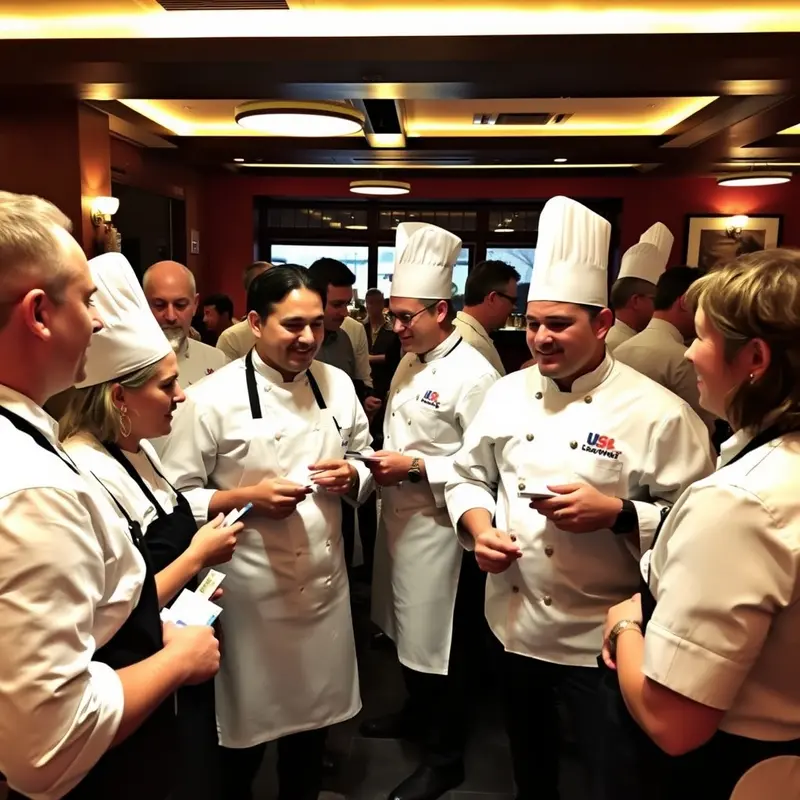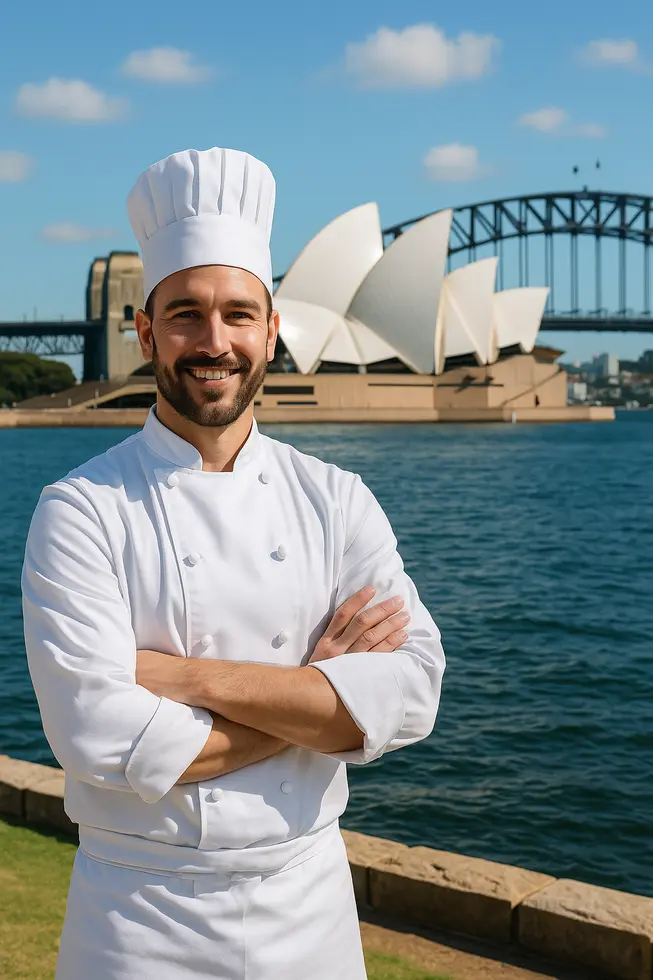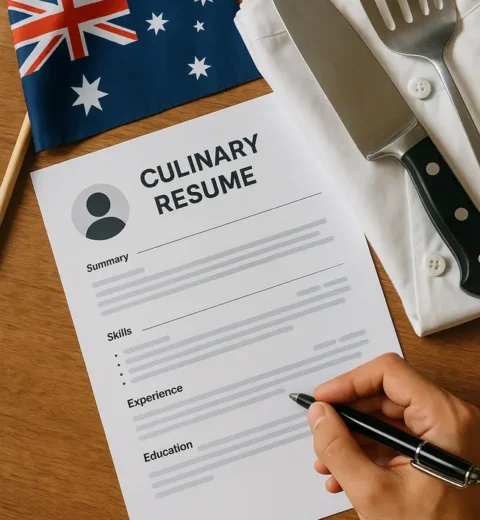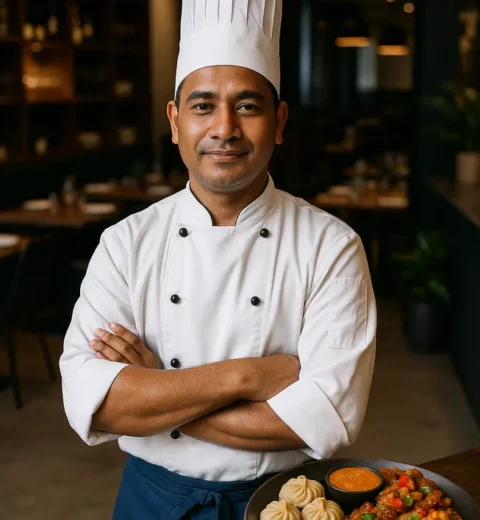Moving to Australia as a chef offers an exciting opportunity to advance your career in a country renowned for its vibrant culinary scene. From navigating visa options to finding the right job, this guide will detail every step of your journey. You’ll learn about various visa choices tailored for chefs, discover effective job search strategies, and understand the importance of networking. Additionally, staying informed about visa fees and immigration updates ensures a smoother transition. Whether you’re a head chef or a pastry chef, this guide is designed to help you achieve success in the Australian culinary industry.
Navigating Visa Choices: Charting Your Path as a Chef in Australia
When considering a move to Australia as a chef, understanding your visa options is crucial. Among the paths available, the Skilled Independent Visa (Subclass 189) stands out for those not needing employer or family sponsorship. Chefs must check whether they’re listed on strategic skill lists like the MLTSSL to qualify. Critical for this visa is achieving a qualifying score on a points-based system, which assesses factors such as your age, skills, and English proficiency.
The Skilled Nominated Visa (Subclass 190) requires a nomination from an Australian state or territory. While similar to the 189 visa in using a points-based system, the state nomination can often enhance your points, providing a better chance of invitation.
For those open to more regional experiences, the Skilled Work Regional (Provisional) Visa (Subclass 491) could be an ideal choice. It demands sponsorship either from a relative in regional Australia or by a government agency. It offers a pathway to permanent residency after living and working in a designated area for a certain period.
Chefs looking for employer sponsorship can consider the Temporary Skill Shortage (TSS) Visa (Subclass 482). This option requires that your potential employer is an approved sponsor and that your occupation appears on the relevant skills list, supporting a more direct route into the Australian workforce.
Each visa application necessitates fulfilling specific requirements, such as a skills assessment to validate your culinary credentials, proving English proficiency, and meeting health and character standards. Understanding and preparing for these nuances ensures a smoother transition to your new culinary life in Australia.
Securing Chef Positions in Australia: Strategies and Tips
Navigating the job market in Australia as a chef requires a strategic approach, given the country’s unique demand for culinary expertise. Understanding Australia’s Skilled Occupation List (SOL) is crucial. This list highlights occupations in demand across Australia, and chef roles, including head, sous, and pastry chefs, are prominently featured due to persistent skill shortages. This demand not only opens doors for skilled migration via various visa pathways but also offers plentiful employment opportunities.
To enhance your eligibility for Australian chef positions, a skills assessment is necessary, typically conducted by approved authorities like Trades Recognition Australia. Furthermore, demonstrating English proficiency through tests such as IELTS, coupled with substantive work experience—preferably three years or more—is important. Formal qualifications in commercial cookery or hospitality reinforce your candidacy.
The pursuit of employment should commence with applying directly on job portals like Seek, Indeed, and LinkedIn, keeping an eye on roles in regional areas where demand is acute. Regions like Tasmania, Northern Territory, and rural Queensland often seek qualified chefs. Networking remains vital; joining professional groups on platforms like LinkedIn or Facebook can provide valuable connections and insights.
Additionally, many businesses, especially fine dining establishments and boutique hotels, are actively sponsoring visas for overseas chefs, responding to local talent shortages. Recruitment agencies specialized in hospitality placements can be excellent allies in connecting you with employers who offer sponsorship opportunities.
Building a strong application necessitates an updated resume tailored to Australian standards, skill assessment documentation, proof of English proficiency, and references from past employers. By adhering to these strategies, you can effectively pave your way to a rewarding culinary career in Australia.
Networking Culinary Pathways: Building Connections for a Chef’s Journey to Australia

Networking is a vital component of moving to Australia as a chef, acting as a bridge between your culinary skills and potential job opportunities. Professional associations play a foundational role in this endeavor. Organizations like the Australian Culinary Federation offer a gateway into the Australian culinary scene, providing insights and contacts that are invaluable. Participating in industry events, such as conferences and workshops, fosters face-to-face interactions with Australian chefs and restaurateurs, broadening your professional horizon.
In the digital age, social media platforms such as LinkedIn serve as powerful tools for networking. By connecting with chefs and restaurateurs in Australia, and joining relevant culinary groups, you can glean insights into the industry. Sharing your culinary creations on Instagram and TikTok not only displays your skills but also connects you with Australian food influencers, widening your reach. Use relevant hashtags to increase your visibility within the Australian market.
Personal connections also pave the way for smoother transitions. If you have friends or family in Australia, leverage those relationships to introduce yourself to key players in the culinary industry. Similarly, tapping into alumni networks from culinary schools can yield connections with graduates who have ventured into the Australian culinary space.
Understanding opportunities for skill assessments and sponsorships is crucial. Employers often seek talented chefs and may offer visa sponsorship, particularly within regions facing shortages. Thus, acquainting yourself with visa options and potentially consulting migration experts can be advantageous.
By integrating these networking strategies, you not only enhance your chances of securing employment but also ensure a smoother transition into the vibrant culinary landscape of Australia.
Navigating Visa Fees and Immigration Changes: Essential Insights for Chefs Moving to Australia
As you chart the course to relocate to Australia as a chef, understanding the financial landscape of visa applications is crucial. An essential part of this process is staying informed about visa fee increases, which are set to rise from July 1, 2025. Although precise amounts for chef-specific visas aren’t detailed, aspiring applicants should frequently consult the Australian Government’s Department of Home Affairs website for the most accurate and up-to-date information.
The financial implications extend beyond just visa fees. While specific to student visas, recent hikes in financial capacity requirements signal a broader trend towards stricter financial prerequisites across various visa categories. Chefs planning their move should anticipate and prepare for potential changes in financial expectations.
In addition to financial considerations, the evolution of Australia’s immigration policies adds another layer of complexity. Fortunately, chefs benefit from being included in the skilled occupation list, making them eligible for visas such as the Skilled Independent Visa (subclass 189) and the Skilled Nominated Visa (subclass 190). These visas rely on a points-based system, rewarding applicants based on age, English proficiency, and relevant work experience.
Recognizing the workforce demand, chefs are experiencing high demand, especially in regional areas where opportunities are abundant for skilled culinary professionals. With many employers ready to sponsor visas, particularly in sectors plagued with talent shortages, the landscape is ripe for chefs seeking stable, long-term opportunities.
As potential applicants, maintaining awareness of the ongoing updates in immigration policies and visa fees, alongside job market trends, will equip you with the knowledge to navigate seamlessly through Australia’s dynamic visa landscape, ensuring a successful transition to your culinary career down under.
Final thoughts
Embarking on a journey to Australia as a chef promises career advancement and new experiences. By understanding your visa options and leveraging effective job search strategies, you can secure the position that best suits your skills. Networking is equally vital as it opens doors to opportunities and provides firsthand insights into the industry. Lastly, staying up-to-date with visa fees and immigration policies will help you plan seamlessly. With the right preparation and determination, you can successfully transition into the Australian culinary landscape and achieve your professional dreams.
Ready to start your culinary journey in Australia? Contact us to explore job opportunities.
Learn more: https://jobsrecruiter.com.au/contact-us/
About us
JobsRecruiter specializes in connecting skilled chefs from around the world with prime opportunities in Australia’s dynamic culinary industry. We offer personalized support, from job placement to sponsorship guidance, ensuring a smooth transition and successful career advancement in Australia.



